
|
| |
|
|
|
|
 |
|
|
100th Infantry Battalion
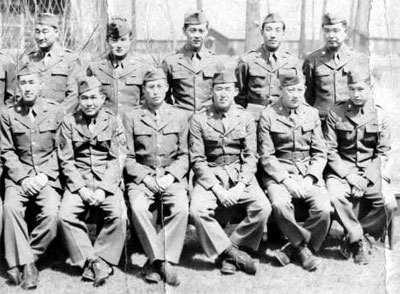 |
100th Infantry Battalion
by Sonny Smith
After the surprise attack on Pearl Harbor on December 7, 1941 an air of distrust arose regarding people of Japanese ancestry in the United States. By mid 1942 most Japanese-Americans in the continental U.S. were put into internment camps by the government.
On Hawaii over a fourth of the population was of Japanese ancestry and the National Guard units there were staffed by a large number of second generation Japanese-Americans referred to as Nisei.
|
|
Fearing that if Hawaii was invaded the Nisei in the National Guard would not remain loyal to the U.S., General Emmons, Commander of the U.S. Army in Hawaii, requested that the Japanese-American Soldiers be formed into a Hawaiian Provisional Battalion and sent to the mainland. The Nisei, now the 100th Infantry Battalion, did so well in training that President Franklin D. Roosevelt authorized the formation of a Japanese-American segregated combat unit.
This unit would eventually become known as the 442nd Infantry Regimental Combat Team whose motto became “Go For Broke”.
The 442nd was a fully self-sufficient fighting force consisting of 1st, 2nd, 3rd Infantry Battalions, the 522nd Field Artillery Battalion, the 232nd Engineering Company, an Anti-Tank Company, a Cannon Company, and non-combat support. They began training in Camp Shelby, Mississippi.
|
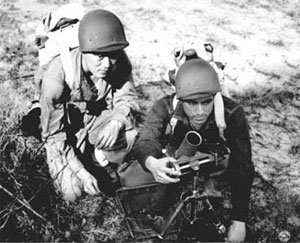 |
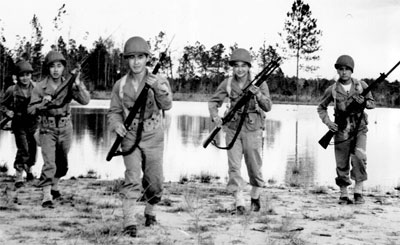 |
By September 26, 1943, the 100th Infantry Battalion entered combat in Italy where they led the advance on Monte Milleto. The 100th Battalion was attached to the 34th Infantry Division where the 100th facing heavy resistance captured their first objective the capture of Benevento, an important rail center and road intersection. The men of the 100th Battalion advanced 15 miles in 24 hours fighting both day and night against heavy enemy resistance.
As they pushed the Germans further north the Nisei faced their next challenge, they would need to cross the strong currents of the twisting Volturno River.
|
|
On the other bank of the Volturno the Germans waited overlooking the river from the hilly countryside.
The 100th Battalion would eventually cross the river in three places. The first men to cross the river faced withering machine-gun fire as they waded across the water. The Germans who held the high ground continuously shot down on the GIs as they came ashore, and it wasn’t until they reached dry land that they were able to return fire on the Germans. In their first week of combat the men of the 100th Battalion had taken 26 combat casualties and lost 13 men to accidents.
At the second crossing, the men of the 100th faced waters that in places, was over the heads of some of the men.
|
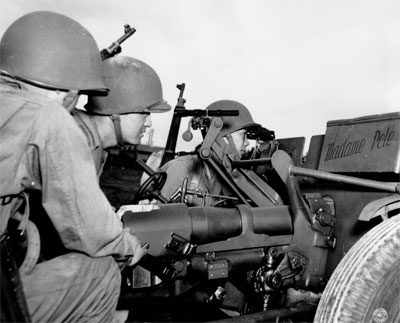 |
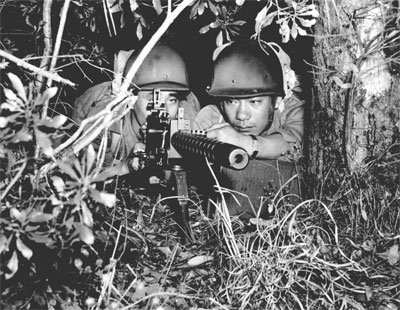 |
They came ashore facing minefields, fortified
machine gun nests, artillery fire, Nebelwerfers and Panzer Grenadiers
from the 29th Panzer Grenadier Regiment.
It was during the fighting that took place near the second crossing
that Private Masao Awakuni earned the Distinguished Service Cross for
charging and destroying a tank with a Bazooka single-handedly.
On November 3rd the 100th crossed the river for the third time. The Luftwaffe strafed the Nisei as they battled the entrenched German defenders. The next day word reached Staff Sergeant Ozaki that a highly respected officer of the battalion had been wounded and captured. Upon hearing the news Sergeant Ozaki ordered his platoon to fix bayonets and charge. The GIs yelled “Banzai” as they overran the defenders.
|
|
The news that prompted the charge was mistaken,
but such was the Nisei’s concern for one another that they never left a
man behind (most of them had known each other since childhood).
The 100th Battalion had earned a reputation as some of the best
assault troops in the U.S. army. By the time they were relieved on
November 11, the men of the 100th had earned 19 Silver Stars, but
casualties were high.
Eighteen officers and 239 enlisted men were wounded, three officers and 75 enlisted men died. The 100th Battalion would from then on and forever be known as “The Purple Heart Battalion”.
|
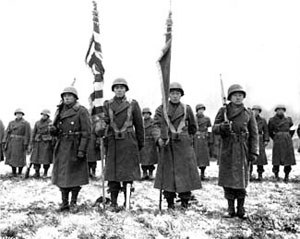 |
Last Updated On Friday, August 8, 2014 by Wayne at Battlefront
|
|
|